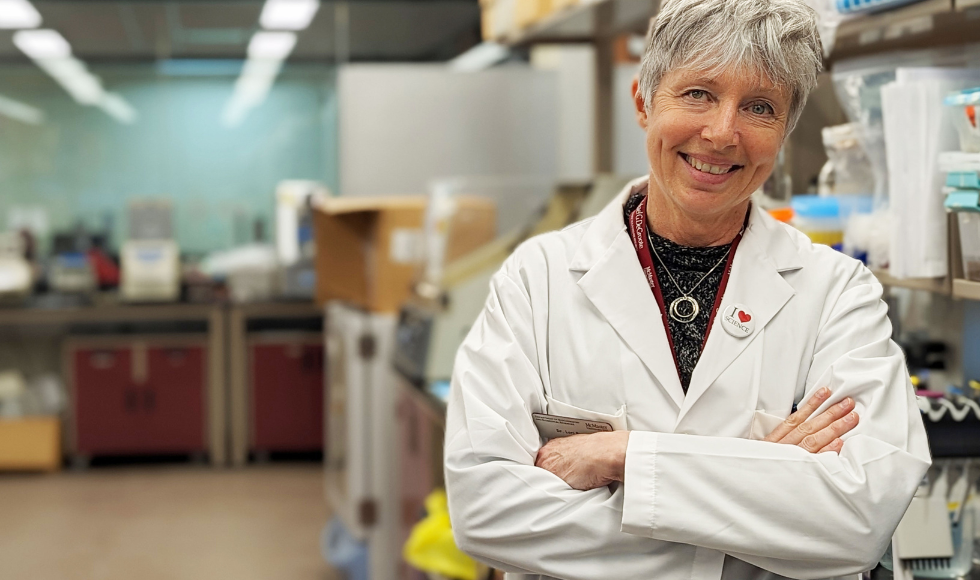Trojan horse tactics: Researchers discover path into drug-resistant bacteria that could lead to new ways to treat infections

Research out of Lori Burrows' lab has identified a new approach that uses the nature of bacterial nutrient transporters to help antibiotics more effectively reach their targets.
BY Blake Dillon
May 3, 2023
Some bacteria have double-layered membranes that prevent antibiotics from effectively reaching their targets, but researchers at McMaster University have discovered a new way to overcome these barriers.
Lori Burrows, associate director of the Michael G. DeGroote Institute for Infectious Disease Research, says the need to capture iron from the environment may leave those otherwise difficult-to-treat bacteria vulnerable to antibiotics.
“Bacteria have complex regulatory systems dedicated to iron acquisition,” explains Burrows, whose research supports the Global Nexus School for Pandemic Prevention and Response. “Iron is essential for bacterial growth, and so, when they are low on iron, these gram-negative bacteria produce molecules called siderophores that go out and trap iron, and then bring it back across their outer membrane.”
Burrows says that, given the scarcity of iron in our bodies, bacteria can get greedy and take in the iron-bound siderophores that are produced by other bacteria. In fact, in new research published in Proceedings of the National Academy of Sciences (PNAS), the Burrows Lab showed that the iron transporters of the opportunistic pathogen Pseudomonas aeruginosa — which causes pneumonia and other hospital-acquired infections — can take in a foreign siderophore called bisucaberin, as well as siderophore-mimicking antibiotics.
Researchers believe this behaviour may be useful in the design of new ways for antibiotics to breach the outer barrier of these drug-resistant bugs.

“One of the major challenges of antibiotic development is getting drugs across that outer membrane,” says Derek Chan, a PhD candidate in the Burrows Lab and the lead author on the paper. “Our research suggests that we can take advantage of the promiscuous nature of bacterial nutrient transporters to overcome this challenge, which could inform the development of new drugs or lead to novel applications for existing ones.”
This work builds on previous research out of the Burrows Lab, where they discovered that the antibiotic thiocillin could exploit the same iron transporters of Pseudomonas aeruginosa to infiltrate its outer membrane. Elsewhere, related research has led to the development of the recently FDA-approved antibiotic cefiderocol, which also hijacks bacterial iron transporters.
Researchers are cautiously optimistic that other antibiotics could be combined with or attached directly to other siderophores to create all-new treatment options for a range of otherwise resistant infections.
“It’s the microbial equivalent of food poisoning,” Burrows explains. “The bacteria think they are getting iron, but they are unknowingly getting an antibiotic, too. It’s a ‘Trojan horse’ approach to tricking bacteria into letting antibiotics in.”


